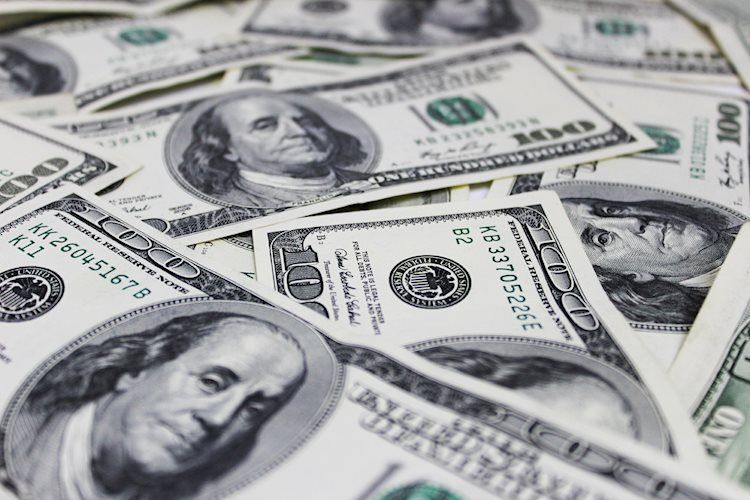- US Dollar Index falls due to profit-taking, still trades above 104.00.
- Economists predict 3.0% growth for US Q3 GDP, which might continue favoring the USD.
- ISM Manufacturing PMI is expected to climb four points to 47.6, while the labor market is expected to show poor results for October.
The US Dollar Index (DXY), which measures the value of the USD against a basket of six currencies, declined on Monday. Thisreversed earlier gains amid profit-taking ahead of key economic figures from October to be released later this week.
Despite a robust economy, the US Dollar faces headwinds. DXY breached its 200-day SMA but now consolidates due to overbought conditions. Fed officials remain cautious on inflation, and markets anticipate rate cuts by year-end.
Daily digest market movers: US Dollar retraces from gains ahead of high-tier data
- The US economy is expected to grow at a steady pace in Q3 as indicated by forecasts and economic models such as GDPNow and the New York Fed’s Nowcast.
- The S&P Global US Manufacturing PMI rose to a two-month high in October, indicating a slight improvement in the manufacturing sector.
- ISM PMIs from the same month to be released on Friday will give further details.
- The positive economic data suggests that the US economy remains resilient despite global headwinds, supporting the US Dollar’s strength.
- Labor market figures are expected to see poor results on Friday with Nonfarm Payrolls estimated below 200K in October, which might weigh on the USD.
DXY technical outlook: DXY overbought, buyers lose momentum
The DXY index briefly surpassed the 200-day SMA last week, but buyers lost momentum due to overextended upward moves. The index is now anticipating sideways movement to correct the overbought conditions.
Despite some gains at the week’s end, indicators remain near the overbought zone. Support lies at 104.50, 104.30 and 104.00, while resistance levels exist at 104.70, 104.90 and 105.00.
US Dollar FAQs
The US Dollar (USD) is the official currency of the United States of America, and the ‘de facto’ currency of a significant number of other countries where it is found in circulation alongside local notes. It is the most heavily traded currency in the world, accounting for over 88% of all global foreign exchange turnover, or an average of $6.6 trillion in transactions per day, according to data from 2022. Following the second world war, the USD took over from the British Pound as the world’s reserve currency. For most of its history, the US Dollar was backed by Gold, until the Bretton Woods Agreement in 1971 when the Gold Standard went away.
The most important single factor impacting on the value of the US Dollar is monetary policy, which is shaped by the Federal Reserve (Fed). The Fed has two mandates: to achieve price stability (control inflation) and foster full employment. Its primary tool to achieve these two goals is by adjusting interest rates. When prices are rising too quickly and inflation is above the Fed’s 2% target, the Fed will raise rates, which helps the USD value. When inflation falls below 2% or the Unemployment Rate is too high, the Fed may lower interest rates, which weighs on the Greenback.
In extreme situations, the Federal Reserve can also print more Dollars and enact quantitative easing (QE). QE is the process by which the Fed substantially increases the flow of credit in a stuck financial system. It is a non-standard policy measure used when credit has dried up because banks will not lend to each other (out of the fear of counterparty default). It is a last resort when simply lowering interest rates is unlikely to achieve the necessary result. It was the Fed’s weapon of choice to combat the credit crunch that occurred during the Great Financial Crisis in 2008. It involves the Fed printing more Dollars and using them to buy US government bonds predominantly from financial institutions. QE usually leads to a weaker US Dollar.
Quantitative tightening (QT) is the reverse process whereby the Federal Reserve stops buying bonds from financial institutions and does not reinvest the principal from the bonds it holds maturing in new purchases. It is usually positive for the US Dollar.
Read the full article here

